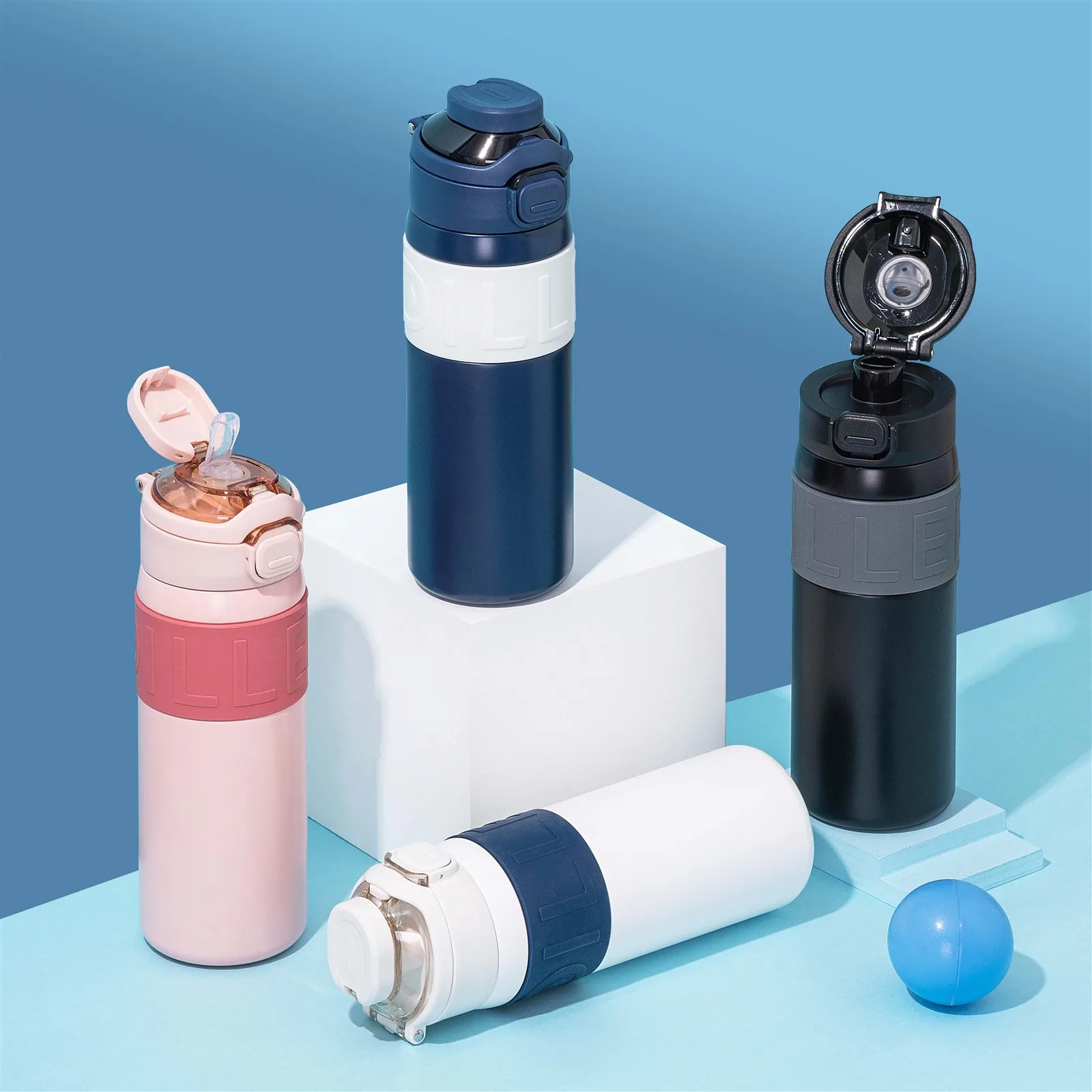اليوم سوف نعلمك بالتفصيل كيفية تنظيف الأكواب المعزولة وأكواب الزجاج والأكواب البلاستيكية لتجنب نمو البكتيريا والتأثير على صحتك.
يمكن إتباع الخطوات التالية لتنظيف كوب العزل:
1. بقع الشاي وبقع القهوة: أولاً، انقعي الكوب المعزول في الماء الدافئ لبعض الوقت، ثم امسحيها بمعجون الأسنان لإزالتها.
2. بقع الملح: أولاً، اشطف الجزء الداخلي والخارجي لكوب العزل بالماء الدافئ، ثم استخدم فرشاة أسنان مغموسة في ملح الطعام لإزالة البقع.
3. بقع الفاكهة: إزالة بقع الفاكهة أمر بسيط نسبيًا. انقعها في الماء المالح لفترة إضافية من الوقت، ثم اغسلها بمعجون الأسنان لإزالتها.
4. الرائحة: صب الماء المالح في كوب معزول، ثم رجّه، ثم اشطفه بالماء النظيف لإزالة الرائحة.
5. بقع الحليب وحليب فول الصويا: اشطفي أولاً كوب الترمس بالماء، ثم صبي فيه كمية مناسبة من الخل الأبيض، ورجيه مرتين، ثم اتركيه لمدة نصف ساعة، وأخيراً اشطفيه بالماء.
6. البقع التي يصعب إذابتها في الماء: اغمسي كمية صغيرة من الحمض أو القلوي المخفف بفرشاة صغيرة وافركي كأس العزل لإزالتها.
7. التنظيف اليومي: بعد استخدام الكوب المعزول كل يوم، يجب تنظيفه في الوقت المناسب للتأكد من عدم وجود أي رائحة.
يمكن أن تتم عملية تنظيف الأكواب الزجاجية بالخطوات التالية:
1. تنظيف الجزء الداخلي: أولاً، صب كمية مناسبة من الماء الدافئ في الزجاج، وأضف كمية صغيرة من المنظف المحايد، وامسح السطح الداخلي بقطعة قماش نظيفة أو إسفنجة لإزالة الأوساخ والبكتيريا. إذا كان للكوب رائحة غريبة، يمكنك إضافة القليل من الخل الأبيض إلى الماء، وتقليبها جيدًا، وترك الخل الأبيض منقوعًا في الماء الدافئ لفترة من الوقت، ثم شطفه بالماء النظيف.
2. تنظيف الجزء الخارجي: بلل الجزء الخارجي من الزجاج بالماء النظيف، وأضف كمية صغيرة من الماء والصابون أو المنظف المحايد، وامسح السطح بقطعة قماش نظيفة أو إسفنجة. احرص على عدم استخدام قطعة قماش أو إسفنجة خشنة للغاية لتجنب خدش السطح. ثم اشطف المنظف بالماء النظيف وجففه بمنشفة نظيفة.
3. إزالة الترسبات الكلسية: إذا كانت الترسبات الكلسية موجودة داخل الكوب الزجاجي، يمكن سكب محلول مخلوط من الخل والماء في الكوب ونقعه لفترة من الوقت، ثم شطفه بالماء النظيف. إذا كانت الترسبات الكلسية شديدة، يمكن استخدام عصير الليمون أو محلول حمض الأسيتيك للتنظيف.
4. التطهير والتعقيم: لمزيد من التطهير والتعقيم، يمكن غلي الزجاج في الماء المغلي لمدة 5-10 دقائق، أو يمكن إجراء التطهير بدرجة حرارة عالية باستخدام خزانة التطهير. احرص على عدم استخدام المطهرات المهيجة بشكل مفرط لتجنب التآكل وتلف الكوب.
باختصار، عند تنظيف الأكواب الزجاجية، من المهم استخدام المنظفات والأدوات اللطيفة، وتجنب استخدام الأشياء الحادة والمواد المهيجة القوية لتجنب إتلاف الأكواب. وفي الوقت نفسه، من المهم الحفاظ على الكوب جافًا وصحيًا لتجنب نمو البكتيريا.
يمكن أن تتم عملية تنظيف الأكواب البلاستيكية بالخطوات التالية:
1. التنظيف الداخلي: أولاً، صب كمية مناسبة من الماء الدافئ في الكوب البلاستيكي، وأضف كمية صغيرة من المنظف المحايد، وامسح السطح الداخلي بقطعة قماش نظيفة أو إسفنجة لإزالة الأوساخ والبكتيريا. إذا كان للكوب رائحة غريبة، يمكنك إضافة القليل من الخل الأبيض إلى الماء، وتقليبها جيدًا، وترك الخل الأبيض منقوعًا في الماء الدافئ لفترة من الوقت، ثم شطفه بالماء النظيف.
2. التنظيف الخارجي: بلل الجزء الخارجي من الكوب البلاستيكي بالماء النظيف، وأضف كمية صغيرة من الماء والصابون أو المنظف المحايد، وامسح السطح بقطعة قماش نظيفة أو إسفنجة. احرص على عدم استخدام قطعة قماش أو إسفنجة خشنة للغاية لتجنب خدش السطح. ثم اشطف المنظف بالماء النظيف وجففه بمنشفة نظيفة.
3. إزالة بقع الشاي: إذا كانت هناك بقع شاي داخل الكوب البلاستيكي، يمكن سكب محلول مخلوط من الخل والماء في الكوب ونقعه لفترة من الوقت، ثم شطفه بالماء النظيف. إذا كانت بقع الشاي شديدة، يمكن استخدام عصير الليمون أو محلول حمض الأسيتيك للتنظيف.
4. انتبه إلى درجة حرارة الماء: تجنب استخدام الماء الساخن لتنظيف أكواب تريتان البلاستيكية، لتجنب تشوه أو تشقق الأكواب، وتجنب التآكل والتلف للأكواب.
يجب ملاحظة أنه عند استخدام الأكواب البلاستيكية، تجنب استخدام مواد التنظيف والمطهرات المهيجة بشكل مفرط لتجنب تآكل الأكواب وتلفها. في الوقت نفسه، لا تستخدم أشياء حادة أو أدوات تنظيف ذات احتكاك قوي لتجنب خدش السطح. بعد التنظيف، يجب تجفيف الكوب لمنع نمو البكتيريا.
باختصار، بغض النظر عن نوع الكوب، يجب استخدام منظف خفيف وأدوات تنظيف ناعمة للتنظيف، وتجنب استخدام مواد التنظيف المهيجة للغاية وأدوات التنظيف القوية. وفي الوقت نفسه، من المهم الحفاظ على الكوب جافًا وصحيًا لتجنب نمو البكتيريا.




